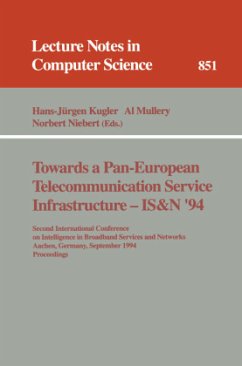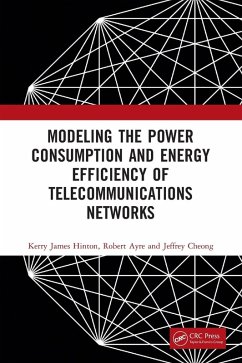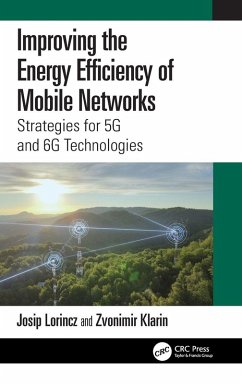
Algorithms & Protocols Towards Energy-Efficiency in Wireless Networks
Versandkostenfrei!
Versandfertig in 6-10 Tagen
39,99 €
inkl. MwSt.

PAYBACK Punkte
20 °P sammeln!
A plethora of wireless technologies promiseubiquitous communication in the future. A majorimpediment to this vision is limited energy supplyfrom batteries in these devices. Energy supply hasfar reaching implications on user experience as wellas practicality of many envisaged applications. Theenergy consumed for radio communication in thesedevices is a major factor in the operating lifetimesof these devices. This calls for design of networkprotocols and algorithms that reduce energyconsumption due to the wireless interface. In thisbook we look at three emerging application scenariosof wireless ...
A plethora of wireless technologies promise
ubiquitous communication in the future. A major
impediment to this vision is limited energy supply
from batteries in these devices. Energy supply has
far reaching implications on user experience as well
as practicality of many envisaged applications. The
energy consumed for radio communication in these
devices is a major factor in the operating lifetimes
of these devices. This calls for design of network
protocols and algorithms that reduce energy
consumption due to the wireless interface. In this
book we look at three emerging application scenarios
of wireless networks, namely: (i) VoIP calls over
Wireless LANs (ii) Tag Anti-Collision Protocols for
Radio Frequency Identification (RFID) systems, and
(iii) Topology Control Algorithms for Wireless Mesh
Networks. We present techniques to make radio
communication energy-efficient in these scenarios
along with evaluations proving their effectiveness.
Moreover, guidelines are presented on how such
techniques can be extended to achieve energy
consumption reductions for other application
scenarios. This book is a
timely read in a world that is increasingly energy-
aware.
ubiquitous communication in the future. A major
impediment to this vision is limited energy supply
from batteries in these devices. Energy supply has
far reaching implications on user experience as well
as practicality of many envisaged applications. The
energy consumed for radio communication in these
devices is a major factor in the operating lifetimes
of these devices. This calls for design of network
protocols and algorithms that reduce energy
consumption due to the wireless interface. In this
book we look at three emerging application scenarios
of wireless networks, namely: (i) VoIP calls over
Wireless LANs (ii) Tag Anti-Collision Protocols for
Radio Frequency Identification (RFID) systems, and
(iii) Topology Control Algorithms for Wireless Mesh
Networks. We present techniques to make radio
communication energy-efficient in these scenarios
along with evaluations proving their effectiveness.
Moreover, guidelines are presented on how such
techniques can be extended to achieve energy
consumption reductions for other application
scenarios. This book is a
timely read in a world that is increasingly energy-
aware.












